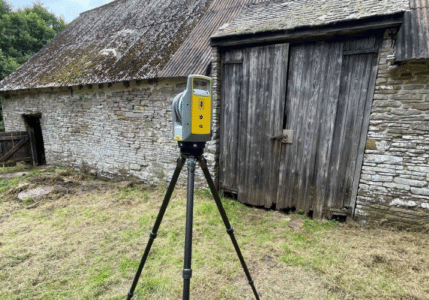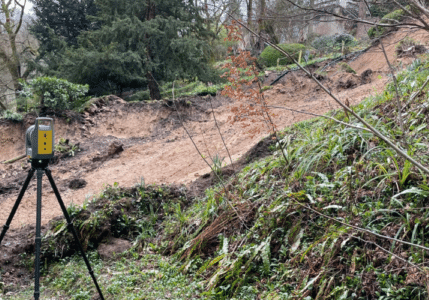Scan to Bim - Case Study for Historic England
Heritage Survey of The Oriental Club
Bury Associates were recently asked by Historic England to contribute a Scan to BIM case study for their new BIM for Heritage guide. We've reproduced our case study for this month's blog; it describes how we laser scanned and modelled the historic Oriental Club in the heart of London. We then created an incredibly detailed BIM from the point cloud and other 3D spatial information collected by our survey teams.

Introduction
Bury Associates have long been recognised as one of the UK's leading providers of Scan to BIM services. We carry out many surveys of listed and historic structures. Historic England approached us earlier this year and asked for help in putting together their important new guide on using BIM for Heritage. Obviously we were more than happy to assist. We produced this case study describing how BIM was to be fully utilised by our client. They wanted to schedule improvement works on the Grade I listed Oriental Club in the heart of London. At the foot of this blog post you'll find a link to download Historic England's guide - BIM for Heritage : Developing a Historic Building Information Model.
The Case Study
The Oriental Club is based in the Grade I listed Stratford House just off London’s Oxford Street. It was designed by Robert Adam, the architect who designed Bath’s iconic Pulteney Bridge. Stratford House was built between 1770 and 1776 for the 2nd Earl of Aldborough on the site of what was once the 16th Century Lord Mayor’s Banqueting house.
The Duke of Wellington established the Oriental Club in 1824. It has been based in Stratford House since 1962. The aim of the club was to be an institution where gentlemen returning from the British Empire in the East could “meet on a footing of social intercourse”. It has included many notable figures amongst its membership.
The club is now looking towards carrying out improvements and repair work to Stratford House and has appointed VHH Architects to lead the project.
Why BIM?
The architectural team are long-time advocates of BIM for heritage projects. They have used it for projects such as the rearrangement of Leicester Cathedral to make way for the internment of Richard III; this experience was key in their selection by the Oriental Club Committee. It was felt that working within a 3D BIM environment was the only way to fully understand this complex historic structure and that the scheduling of difficult conservation work would be made considerably easier to control.
How was the Survey/Project Undertaken?
The building consists of a basement, ground, first, second and third floors plus a fully accessible roof. Many rooms in the historic heart of the building contain panelling and considerable amounts of ornate plaster-work. All of this detail had to be laser scanned in full colour. This provided the architects with a full high definition 360 photographic record of the entire structure.
We commenced the project using total stations to establish an accurate survey control network . This was tied into Ordnance Survey coordinates using a survey grade GPS system. Three laser scanners were used to capture a precise point cloud of every part of the building. We took a total of 960 scans inside, externally and on the roof. We also carried out additional survey work to show the surrounding topographic detail. A CCTV survey was conducted to gain a greater understanding of the drainage system running under the basement. In total, around 160 Gb of scan data was collected by our survey teams. This was was registered together as work progressed. It was then passed over to our in-house Revit team for modelling.
The BIM showing the existing condition was produced by a team of 5 Revit modellers. It took around 600 man hours to complete. As with any project of this size and complexity, the team worked collaboratively throughout. Each person on their own section of the model, with all their work being synchronised together at the end of each day back into the main master file.
What was the deliverable output?
The final model was delivered in Revit 2016 and, after purging, was reduced down to give a file size of 445 Mb. An existing condition BIM for a similar building would normally have a file size of around 100 Mb. As can be seen with this project, modelling intricate heritage architectural detail can increase BIM file sizes substantially.
What problems were encountered?
The building contained a number of features such as statues and carvings. These all had to be shown in their true form in the model. Meshing techniques were employed by the modelling team to enable the creation of the more “organic” geometry presented by these objects.
High resolution scans were taken which were meshed using third party software then built into the model using standard Revit family templates to maintain a reasonable model size. This also meant there was no need for importing “non-Revit” formats such as DWG files directly into the model space.
The main staircases were particularly difficult to model accurately because of the intricate iron-work in the bannisters – much of it curving.
Producing the 360 degree photography was particularly challenging in some areas of the building. This was due to bright sunlight pouring into dark rooms. We used a combination of LED lighting and the balanced exposure control on our laser scanners and were eventually able to achieve excellent results.
How was the BIM data used within the project?
The model had to show sufficient detail internally and externally. This enabled the client to extract 2D plan, section and elevation views from any position with a level of detail equivalent to a 1:20 drawing, as well as using the BIM for 3D work. In order to show this high level of detail, all wood panelling, architraves, beading, cornices and any other ornate features had to be modelled throughout the entire building. Model size can be a particular problem when it comes to creating a BIM of complicated heritage structures. Therefore, we had to take extra care when it came to modelling the building’s more ornate features to maintain a reasonable file size.
The Bury Associates team created a set of family parameters to help facilitate the production of a full repair schedule for all the historic sash windows in the building. These parameters allowed the identification of all individual parts of each window so that their conditions could be recorded. Each window family was set up to contain full details of the frame’s components, as well as mullion sizes and each pane of glass.
As with any major refurbishment project, giving the client a good understanding of the existing services was essential. Stratford House contains a complicated network of HVAC, electricity, gas, water and heating systems. The major elements of these needed to be included in the BIM. Some of the MEP was placed in extremely tight loft spaces which proved challenging to scan. The MEP systems were incorporated into a separate linked model file which was referenced within the same coordinate system as the main model so it could be used collaboratively by the project’s M&E engineers.
For further information on Heritage BIM projects please give us a call on 01905 622495.
You can download Historic England's new guide BIM for Heritage : Developing a Historic Building Information Model
Steve Bury is the Managing Director of Bury Associates, a land and measured building survey company based in the UK. With over 40 years of experience in surveying, Steve Bury established Bury Associates in 1997 to combine the provision of high quality digital surveys with exceptional customer service. Steve has also designed software applications for measuring buildings to automatically create survey drawings.











